
Setup & config options
Suitable power supply
RasPi & sFTP file transfer
Home network print server
Home network scan server
Mesh : home Lan USB drive
Explore hard & software
UFW firewall explained
Secured by fail2ban server
Software packaging & PPA
Apache 2.4+ LAMP server
https web server : port 443
Varnish caching proxy
Module : cgi & perl
Module : geoip
Modules : php & mysql
http*s error handling
Server : conditional logging
TL-domain & dynamic DNS
Webalizer log analyser
Defeat referrer spam
robots.txt & xml sitemaps
Server : .htaccess handling
The game & not the islands
Setup & config options
North Atlantic : Macaronésia
🚫 No ads & tracking
Portugal - 🌴 The portuguese Algarve 🌴
The snapshot on the Algarve coastline
The beaches and locations of interest. Outdoor activity.
This is an older article which I wrote on a free subdomain provided by Wordpress many years ago.
11-Dec 2018
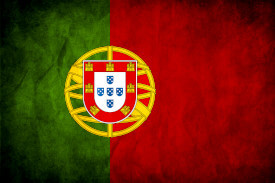
The Algarve overview
The maritime province of the Algarve, often called the garden of Portugal, is the southwestern most part of Europe. Its coastline stretches 160 km from Cape St. Vincent to the border town of Vila Real de Santo António, fronting Spain. The varied coastline contains sluggish estuaries, sheltered lagoons, lowlying areas where clucking marsh hens nest, long sandy spits, and promontories jutting out into the white-capped aquamarine foam.
The land south of the mountains of Monchique and Caldeirão remains a spectacular anomaly that seems more like a transplanted section of the North African coastline than a piece of Europe. The countryside abounds in vegetation: almonds, lemons, oranges, carobs, pomegranates, and figs. Much of the historic flavor is gone forever, swallowed by a sea of dreary high-rise apartment blocks surrounding most towns. Years ago, Portuguese officials, looking in horror at what happened to Spain’s Costa del Sol, promised more limited and controlled development so that they wouldn’t make “Spain’s mistake.” But that promise has not been kept.
Algarvian beaches are some of the best in Portugal. Their quality has led to the tourist boom across the southern coastline, making it a formidable rival of Lisbon’s Costa do Sol and Spain’s Costa del Sol. There are literally hundreds of beaches, many with public showers and watersports equipment available for rent. Not all beaches are suitable for swimming because some have sloping seabeds or swift currents.
Many former fishing villages - now summer resorts - dot the Algarvian coast: Carvoeiro, Albufeira, Olhão, Portimão. The sea is the source of life, as it always has been. The village marketplaces sell esparto mats, copper, pottery, and almond and fig sweets, sometimes shaped like birds and fish.
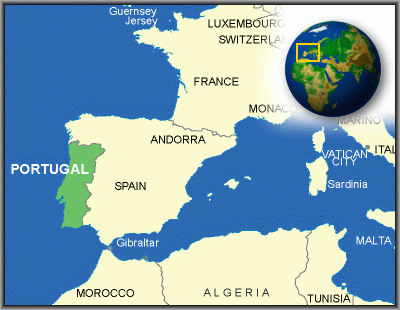
Regional attractions
Sagres : At the extreme southwestern corner of Europe - once called o fim do mundo (the end of the world) - Sagres is a rocky escarpment jutting into the Atlantic Ocean. From here, Henry the Navigator, the Infante of Sagres, launched Portugal and the rest of Europe on the seas of exploration. Here he established his school of navigation, where Magellan, Diaz, Cabral, and Vasco da Gama apprenticed. A virtual ascetic, Henry brought together the best navigators, cartographers, geographers, scholars, sailors, and builders; infused them with his rigorous devotion; and methodically set Portuguese caravels upon the Sea of Darkness.
Both the cape and Sagres offer a view of the sunset. In the ancient world, the cape was the last explored point, although in time the Phoenicians pushed beyond it. Many mariners thought that when the sun sank beyond the cape, it plunged over the edge of the world.
At the reconstructed site of the windswept fortress on Europe’s Land’s End, you can see a huge stone compass dial. The Fortaleza de Sagres is a small museum of interest that documents some of the area’s history. Many beaches fringe the peninsula. Mareta, at the bottom of the road leading from the centre of town toward the water, is the best and most popular. East of town is Tonel, also a good sandy beach. The beaches west of town, Praia de Baleeira and Praia de Martinhal, are better for windsurfing than for swimming.
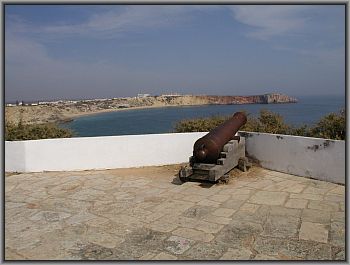
Lagos : Lagos, known to the Lusitanians and Romans as Locobriga and to the Moors as Zawaia, became a shipyard of caravels during the time of Henry the Navigator. Edged by the Costa do Ouro, the Bay of Sagres was at one point in its epic history big enough to allow 407 warships to maneuver with ease. An ancient port city, Lagos was well known by the sailors of Admiral Nelson’s fleet.
In winter, the almond blossoms match the whitecaps on the water, and the weather is often warm enough for sunbathing. In town, a flea market sprawls through the narrow streets. Less than 2 km down the coast, the hustle and bustle of market day is forgotten as the rocky headland of the Ponta da Piedade appears. This spot is the most beautiful on the entire coast. Amid the colorful cliffs and secret grottoes carved by the waves are the most flamboyant examples of Manueline architecture. Much of Lagos was razed in the 1755 earthquake, and it lost its position as the capital of the Algarve. Today only the ruins of its fortifications remain. However, traces of the old linger on the back streets.
The 18th-century Church of Igreja de Santo António sits just off the waterfront. The altar is decorated with some of Portugal’s most notable baroque gilt carvings, created with gold imported from Brazil. Begun in the 17th century, they were damaged in the earthquake but subsequently restored. What you see today represents the work of many artisans.
The Antigo Mercado de Escravos stands as a painful reminder of the Age of Exploration. The arcaded slave market, the only one of its kind in Europe, looks peaceful today, but under its four Romanesque arches, captives were once sold to the highest bidders. The house opens onto the tranquil main square dominated by a statue of Henry the Navigator.
Some of the best beaches - including Praia de Dona Ana, the most appealing - are near Lagos, south of the city. If you go all the way to the southernmost point, Ponta da Piedade, you’ll pass some pretty cove beaches set against a backdrop of rock formations. Steps are sometimes carved into the cliffs to make for easier access. Although it’s crowded in summer, another good white-sand beach is at the 2.5 km-long Meia Praia, across the river from the centre of town.
Portimão : Portimão is perfect if you want to stay in a bustling fishing port rather than a hotel perched right on the beach. Since the 1930s, Praia da Rocha, 3 km away, has snared sunloving traffic. Today it’s challenged by Praia dos Três Irmãos, but tourists still flock to Portimão in the summer.
The aroma of the noble Portuguese sardine permeates the streets. Portimão is the leading fish-canning centre in the Algarve. For a change of pace, this town, on an arm of the Arcade River, makes a good stopover for its fine dining. Stroll through its gardens and its shops, drink wine in the cafes, and roam down to the quays to see sardines roasting on braziers. The routine activity of the Algarvians is what gives the town its charm.
Although it lacks great monuments and museums, Portimão is worth exploring. Just wander through its colourful streets, stopping at any sight that interests you. The once-colourful fishing boats used to unload their catch here at the port but have moved to a terminal across the river. High-rise buildings ring the area, but the core of the old town is still intact. Try to be in Portimão for lunch. Of course, you can dine at a restaurant, but it’s even more fun to walk down to the harbourside, where you can find a table at one of the low-cost eateries. The specialty is charcoal-grilled sardines, which taste like nothing you get from a can. They make an inexpensive meal accompanied by chewy, freshly baked bread; a salad; and a carafe of regional wine. If you’re in town in August, stay for the Sardine Festival, where the glory that is the Portuguese sardine is honored, lauded, and, finally, devoured.
Even those staying in Portimão head for the beach first thing in the morning. The favourite is Praia da Rocha, a creamy yellow strand that has long been the most popular seaside resort on the Algarve. English voyagers discovered the beauty of its rock formations around 1935. At the outbreak of World War II there were only two small hotels and a few villas on the Red coast, most built by wealthy Portuguese. Nowadays, Praia da Rocha is booming. At the end of the mussel-encrusted cliff, where the Arcade flows into the sea, lie the ruins of the Fortress of Santa Catarina. The location offers views of Portimão’s satellite, Ferragudo, and of the bay.
Although Praia dos Três Irmãos is more expensive, you might want to visit its beach, 5 km southwest of Portimão. From Portimão’s centre you can take a public bus; they run frequently throughout the day. Praia dos Três Irmãos has 15 km of burnished golden sand, interrupted only by an occasional crag riddled with arched passageways. This beach has been discovered by skin divers who explore its undersea grottoes and caves.
Nearby is the whitewashed fishing village of Alvor, where Portuguese and Moorish arts and traditions have mingled since the Arab occupation ended. Alvor was a favourite coastal haunt of João II, and now summer hordes descend on the long strip of sandy beach. It’s not the best in the area, but at least you’ll have plenty of space.
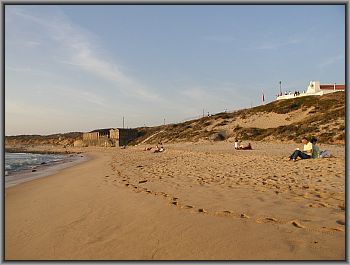
Monchique : The Monchique range of hills is the Algarve at its coolest and highest. The rocky peak of the range, some 900 m high, looks down on forested slopes and green valleys, burgeoning with orange groves, Indian corn, heather, mimosa, rosemary, oleander bushes, and cork-oak, chestnut, pine, and eucalyptus trees. Icy water springs from the volcanic rock that makes up the range, flowing down to the foothills.
The largest town in the borough, also named Monchique, lies on the east side of Mount Fóia, 26 km north of Portimão. The town was once engaged in the manufacture of wooden casks and barrels and the making of oakum and rough cloth. The Manueline-style parish church, with its interesting radiated door facing, dates from the 16th century. Colourful decorated tiles and carved woodwork grace the interior, along with a statue of Our Lady of the Immaculate Conception, an 18th-century work attributed to Machado de Castro. The convent of Nossa Senhora do Desterro is in ruins, but you can look at the curious tile d fountain and the impressive old magnolia tree on its grounds.
Caldas de Monchique was discovered in Roman days and turned into a spa. The waters, from springs in volcanic rock, are still considered good treatment for respiratory disorders, accompanied as they are by the clear air of the highlands. Nearly 13 km from the town of Monchique, Alferce, nestled among trees and mountains, has traces of an ancient fortification.
There’s also an important handicraft centre here. In the opposite direction, about 13 km west of Monchique, is Fóia, the highest point in the Algarve. From here you have splendid views of the hills and the sea.
Silves : When you pass through its Moorish-inspired entrance, you’ll quickly realize that Silves is unlike other towns and villages of the Algarve. It lives in the past, recalling its heyday when it was known as Xelb. It was the seat of Muslim culture in the south before it fell to the Crusaders. Christian warriors and earthquakes have been rough on Silves.
The Castle of Silves, crowning the hilltop, has held on, although it has seen better days. Once the blood of the Muslims, staging their last stand in Silves, flowed like red wine, as one Portuguese historian wrote. The cries and screams of women and children resounded over the walls. Nowadays the only sound you’re likely to hear is the loud rock music coming from the gatekeeper’s house. Silves is most often visited on a day trip from one of the beach towns to the south.
The red-sandstone Castelo dos Mouros might date from the 9-th century. From its ramparts you can look out on the saffron-colored, mossy tile roofs of the village houses down the narrow cobblestone streets where roosters strut and scrappy dogs sleep peacefully in doorways. Inside the walls, the government has planted a flower garden with golden chrysanthemums and scarlet poinsettias. In the fortress, water rushes through a huge cistern and a deep well made of sandstone. Below are dungeon chambers and labyrinthine tunnels where the last of the Moors hid out before the Crusaders found them and sent them to their deaths.
The 13th-century former Cathedral of Silves, on Rua de Sé, was built in the Gothic style. It is one of the most outstanding religious monuments in the Algarve. The aisles and nave are beautiful in their simplicity. The flamboyant Gothic style of both the chancel and the transept dates from a later period. The Christian architects who originally constructed the cathedral might have torn down an old mosque to do so. Many of the tombs here are believed to be the graves of Crusaders who took the town in 1244.
The best artifacts found in the area are on display at the Museu Arqueologia, Rua das Portas de Loulé, a short walk from the Sé. The museum’s major sight is an ancient Arab water cistern prepowered as part of a 9 m-deep well. Outside the main part of town, on the road to Enxerim, near an orange grove, a lonely open-air pavilion shelters a 15th-century stone lacework cross. This ecclesiasti-cal artwork, Cruz de Portugal, is two-faced, depicting a pietà on one side and the crucifixion on the other. It has been declared a national monument of incalculable value.
Albufeira : This cliff-side town, formerly a fishing village, is the St. Tropez of the Algarve. The lazy life, sunshine, and beaches make it a haven for young people and artists, although the oldtimers still regard the invasion that began in the late 1960s with some ambivalence. That development turned Albufeira into the largest resort in the region. Some residents open the doors of their cottages to those seeking a place to stay. Travellers with less money often sleep in tents.
With steep streets and villas staggered up and down the hillside, Albufeira resembles a North African seaside community. The big, bustling resort town rises above a sickle-shape beach that shines in the bright sunlight. A rocky, grottoed bluff separates the strip used by sunbathers from the working beach, where brightly painted fishing boats are drawn up on the sand. Access to the beach is through a tunneled rock passageway. After walking Albufeira’s often hot but intriguing streets, you can escape and cool off at Zoo Marine. It’s a popular water park, with rides, swimming pools, gardens, and even sealion and dolphin shows.
Some of the best beaches - but also the most crowded - are near Albufeira. They include Falesia, Olhos d’Agua, and Praia da Oura. Albufeira, originally discovered by the British, is now the busiest resort on the Algarve. To avoid the crowds on Albufeira’s main beaches, head west for 4 km on a local road to São Rafael and Praia da Galé. You might also go east to the beach at Olhos d’Agua.
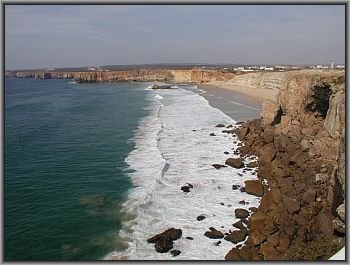
Quarteira : This once-sleepy fishing village between Albufeira and Faro used to be known only to a handful of artists who amused the local fisherfolk. Now, with the invasion of outsiders, the traditional way of life has been upset. A sea of high-rise buildings has swallowed Quarteira, and the place is now a bustling, overgrown resort. The big attraction is one of the Algarve’s longest beaches. In summer it’s filled with vacationing Portuguese and other Europeans who supply a much-needed boost to the local economy.
The largest concentration of quality hotels and restaurants is not in Quarteira or even Praia de Quarteira, but in the satellite of Vilamoura, west of Quarteira. Tourist information is available in Quarteira.
At a central point on the Algarve coast, only 18 km west of Faro airport, Vilamoura is an expansive land-development project, the largest private tourist urbanization in Europe. Although the remains of a Roman villa were discovered when builders were working on the local marina, the history of Vilamoura is yet to be written. Plans call for a city larger than Faro and an interior lake linked with the bay and ocean by two canals. There’s already a marina that can hold more than 1,000 pleasure boats. Vilamoura is now filled with holiday villages and apartment complexes.
Almancil : Almancil is a small market town of little tourist interest, but it’s a centre for two of the most exclusive tourist developments along the Algarve. Vale do Lobo lies 6.5 km southeast of Almancil, and Quinta do Lago is less than 10 km southeast of town.
Quinta do Lago, one of the most elegant tourist estates on the Algarve, also has superb facilities. The pine-covered beachfront property has been a favored retreat of movie stars and European presidents. This is true luxury - at quite a price.
Horseback riding: one of the most well-established riding stables in the area is Quinta do Lago at Edificio Pinheiros Altos Casa Teft, Almancil.
Faro : Once loved by the Romans and later by the Moors, Faro is the provincial capital of the Algarve. In this bustling little city of some 35,000 permanent residents, you can sit at a cafe, sample the wine, and watch yesterday and today collide. Faro is a hotspot of life and activity. It has been rumbled, sacked, and quaked by everybody from Mother Nature to the Earl of Essex (Elizabeth I’s favourite).
Since Afonso III drove out the Moors for the last time in 1266, Faro has been Portuguese. On its outskirts, an international airport brings in thousands and thousands of visitors every summer. The airport has done more than anything else to increase tourism not only to Faro, but also to the entire Algarve.
Many visitors use Faro only as an arrival point, rushing through en route to a beach resort. Those who stick around will enjoy the local charm and color, exemplified by the tranquil fishing harbour. A great deal of antique charm is gone, thanks to the Earl of Essex, who sacked the town, and the 1755 earthquake. Remnants of medieval walls and some historic buildings stand in the Cidade Velha, or Old Town, which can be entered through the Arco da Vila, a gate from the 18th century.
The most bizarre attraction in Faro is the Capela d’Ossos. Enter through a courtyard from the rear of the Igreja de Nossa Senhora do Monte do Carmo do Faro, Largo do Carmo. Erected in the 19-th century, the chapel is completely lined with human skulls and bones.
The church, built in 1713, contains a gilded baroque altar. Its facade is also baroque, with a bell tower rising from each side. Topping the belfries are gilded, mosquelike cupolas connected by a balustraded railing. The upper-level windows are latticed and framed with gold; statues stand in niches on either side of the main portal. Other religious monuments include the old Sé, on Largo da Sé. Built in the Gothic and Renaissance styles, it stands on a site originally occupied by a mosque. Although the cathedral has a Gothic tower, it’s better known for its tiles, which date from the 17th and 18th centuries. The highlight is the Capela do Rosário, on the right. It contains the oldest and most beautiful tiles, along with sculptures of two Nubians bearing lamps and a red chinoiserie organ. Admission is free. The beautiful cloisters are the most idyllic spot in Faro. The cathedral is open daily.
Igreja de São Francisco, Largo de São Francisco is the other church of note. Its facade doesn’t even begin to hint at the baroque richness inside. Panels of glazed earthenware tiles in milk-white and Dutch blue depict the life of the patron saint, St. Francis. One chapel is richly gilded.
The municipal museum, or Museu Municipal de Faro, Largo Dom, Afonso III, is in a former 16th-century convent, the Convento de Nossa Senhora da Assunção. Even if you aren’t particularly interested in the exhibits, the two-story cloister is worth a visit. Many artifacts dating from the Roman settlement of the area are on display. Some of the Roman statues are from excavations at Milreu.
The dockside Museu Maritimo, Rua Communidade Luisada displays models of local fishing craft and of the boats that carried Vasco da Gama and his men to India in 1497. There are replicas of a boat the Portuguese used to sail up the Congo River in 1492 and of a vessel that bested the entire Turkish navy in 1717. It’s open Monday to Friday.
Finally, the Museu Etnográfico Regional, Plaça da Liberdade is a museum devoted to the region’s folkloric culture. The focus is on the fishing industry; crafts and reconstructions of regional interiors are also on display. In photographs you can see rather sad, nostalgic pictures of Algarvian fishing villages before they were surrounded by high-rise developments. The museum is open Monday to Saturday.
Most visitors don’t come to Faro to look at churches or museums, regardless of how interesting they are. A bridge also connects the mainland and the beach, about 6 km from the town centre. At the shore, you can waterski, fish, or just rent a deck chair and umbrella and lounge in the sun.
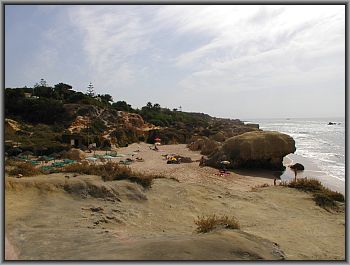
Vila Real de Santo António : Twenty years after the Marquês de Pombal rebuilt Lisbon, which had been destroyed by the great 1755 earthquake, he sent architects and builders to Vila Real de Santo António. They reestablished this frontier town on the bank opposite Spain in only 5 months. Pombal’s motivation was jealousy of Spain. Much has changed, but Praça de Pombal remains. An obelisk stands in the centre of the square, which is paved with inlays of black-and-white tiles radiating like sunrays and is filled with orange trees. Separated from its Iberian neighbour by the Guadiana River, Vila Real de Santo António has car-ferry service between Portugal and Ayamonte, Spain.
Vila Real de Santo António is a great example of 18th-century town planning. A long esplanade, Avenida da República, follows the river, and from its northern extremity you can view the Spanish town across the way. Gaily painted horse-drawn carriages take you sightseeing past the shipyards and the lighthouse.
You can visit the Museu de Manuel Cabanas,Rua Doctor Teofilo Braga, Central Cultural de Vila Real do San António. On the main square of town, it contains regional ethnographical artifacts, plus some paintings and antique engravings. A 5 km drive north on the road to Mertola will take you to the gull-gray castle-fortress of Castro Marim. This formidable structure is a legacy of the border wars between Spain and Portugal. The ramparts and walls stand watch over the territory across the river. Afonso III, who expelled the Moors from this region, founded the original fortress, which was razed by the 1755 earthquake. Inside the walls are the ruins of the Igreja de São Tiago, dedicated to St. James.
Sadly, what was once a sleepy little fishing village has succumbed to high-rises. Nowadays the varinas - fishermen’s wives - urge their sons to work in the hotels instead of the sea, fishing for tips instead of tuna.




